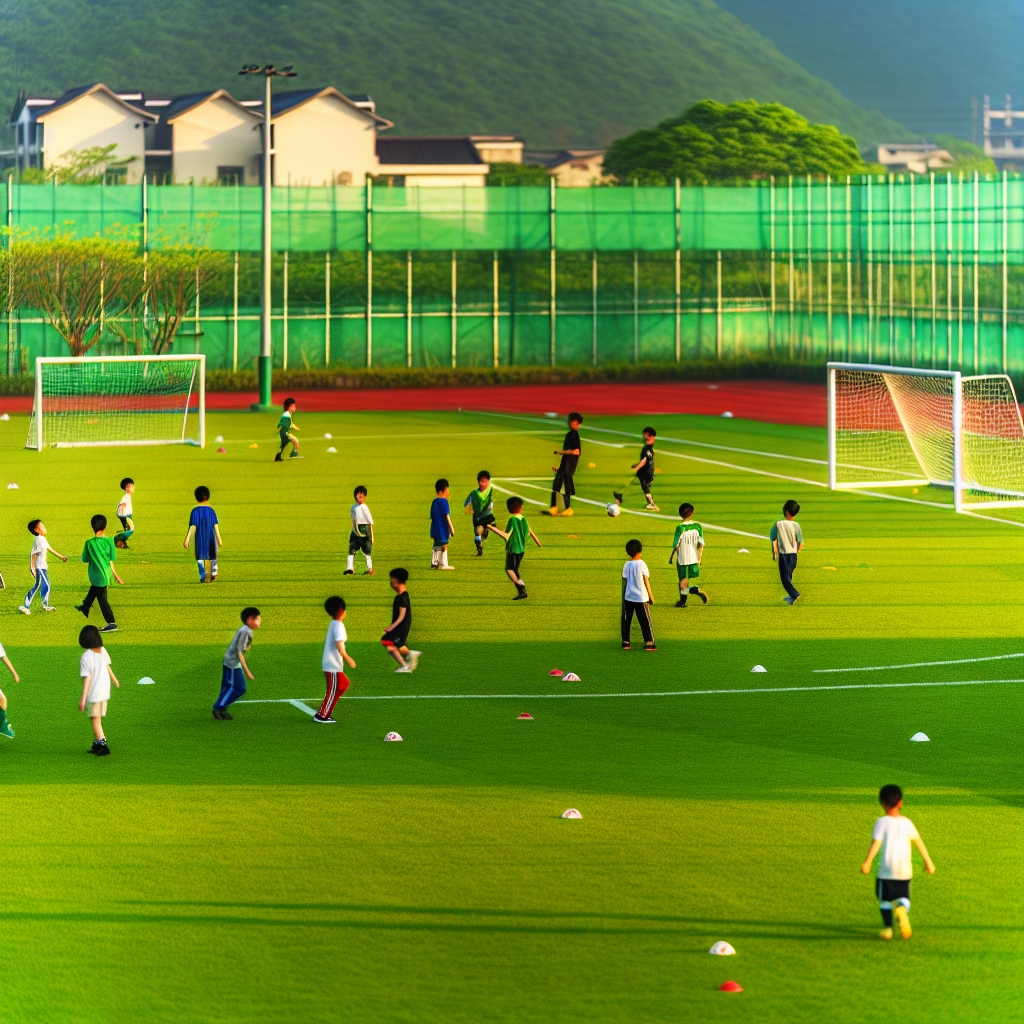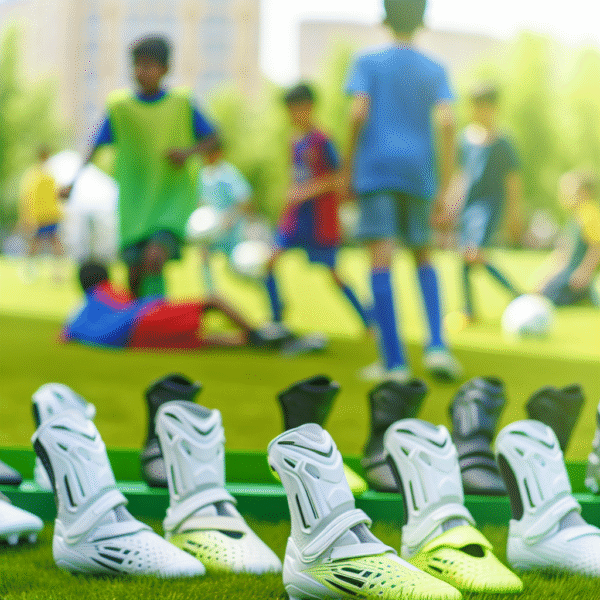Why Youth Soccer Field Dimensions Matter for Families and Adventure Travelers
The phrase
youth soccer field dimensions may not typically spark travel inspiration, but for families and adventure travelers alike, recognizing these field measurements can add meaningful layers to a journey. Whether you’re road-tripping through the Pacific Northwest, coaching in Argentina, or simply people-watching in Barcelona, knowing how youth soccer fields are sized around the world provides insight into both the game and the culture that embraces it.
Across cities, small towns, and off-the-path communities, young players dash across varying field sizes designed specifically for their development stages. These differences in
youth soccer field dimensions aren’t arbitrary—they serve a crucial purpose. From ensuring safety to fostering age-appropriate skill growth, the layout of each pitch reflects a worldwide commitment to nurturing the next generation of footballers.
Standard Youth Soccer Field Dimensions by Age Group
Youth soccer fields don’t follow a one-size-fits-all approach. Instead, they scale according to age groups, tailoring match intensity to the capacity and skills of young players. Whether you’re scouting a casual play spot or navigating youth tournaments abroad, here’s a useful guide to standard dimensions by age category.
U6 (Under 6 Years Old)
- Field Dimensions: Approximately 15 x 30 yards
- Goal Size: 4 feet high by 6 feet wide
- Players per Side: Typically 3v3, no goalkeepers
These smallest pitches are perfect for toddlers just learning basic ball control. In Boulder, Colorado,
Valmont City Park showcases fields like this. Compact setups encourage continuous play, building early interest and coordination.
U8 (Under 8 Years Old)
- Field Dimensions: Around 20 x 40 yards
- Goal Size: 4 feet high by 6–8 feet wide
- Players per Side: Typically 4v4 or 5v5
At this level, games shift toward structured fundamentals. In the UK, towns like Keswick transform cricket greens into multipurpose soccer setups. These matches are fast-paced and short-fielded, encouraging passing drills and basic role learning.
U10 (Under 10 Years Old)
- Field Dimensions: Approximately 40 x 70 yards
- Goal Size: 6.5 feet high by 18.5 feet wide
- Players per Side: 6v6 to 7v7
For players approaching tactical concepts, U10 fields strike a balance between freedom and formality. In Sydney’s Tempe Recreation Reserve, several compact pitches host competitive yet friendly youth games. Some leagues introduce offside rules here, honing spatial awareness.
U12 (Under 12 Years Old)
- Field Dimensions: Roughly 50 x 80 yards
- Goal Size: Full size or slightly reduced (6.5 x 18.5 feet)
- Players per Side: 9v9
U12 fields bring structure and strategy to the forefront. In Montreal,
Parc Jean-Drapeau provides regulation-sized pitches for this level. Players begin to specialize in positions, preparing them for full-format games.
U14 and Older (Up to U18)
- Field Dimensions: Typically 70 x 110 yards (near adult size)
- Goal Size: Standard – 8 feet high by 24 feet wide
- Players per Side: 11v11
By this stage, youth begin embracing the full demands of the game. In New York, Randall’s Island Park’s 60-plus fields accommodate U14 to U18 matches. These locations cater to both local clubs and regional tournaments, often drawing family travelers who follow the youth soccer circuit.
International Variations in Youth Soccer Field Dimensions
Globally,
youth soccer field dimensions aren’t always standardized. While some federations follow FIFA or UEFA guidelines, others adapt based on spatial limitations or cultural preferences. Local parks in Barcelona’s Gràcia district often feature short, narrow fields tucked between buildings—perfect for encouraging tight-space ball control and fast passing.
In rural or underdeveloped areas, field setups may be creative and community-driven. In Indonesia’s eastern Java or Zambia’s Copperbelt Province, cones, lime paint, or nearby landmarks often serve as boundaries. Though informal, these layouts embody the inclusivity and reach of the sport—a valuable reminder that passion often outweighs perfection.
Top Family-Friendly Spots to Play While Traveling
Looking to kick the ball around during your travels? Here are some accessible, youth-sized fields where both structure and spontaneity thrive:
- Washington Park, Portland, Oregon: Offers designated mini-sized turf fields, great for ages U6–U10. Open during daylight hours with trails and gardens nearby.
- Hyde Park, London: The Parade Ground is great for informal weekend matches. Locals often adjust field sizes with cones, mirroring standard dimensions.
- Parque México, Mexico City: Every Sunday, coaches divide its space into proper U8 and U10 zones. Ideal for families wanting cultural immersion via play.
- Black Star FC Academy, Accra, Ghana: Volunteers assist in training sessions shaped by FIFA-compliant field sizes. Kids learn skills and teamwork in a supportive environment.
Pro tip: Check ahead for field usage hours. Many park pitches are open to the public midweek mornings—a golden time for uninterrupted fun away from the weekend rush.
How to Spot Field Layouts Like a Pro Traveler
Once you understand
youth soccer field dimensions, you’ll begin spotting them everywhere—even when nothing’s marked. Improve your travel experience and cultural connection with these on-the-go tactics:
- Observe Weekend Activity: Local matches almost always follow age-specific layouts. Look at team sizes and goal widths to determine field levels.
- Pack a Foldable Net: Lightweight nets can replicate proper dimensions for U6 through U10 levels. They’re ideal for stopovers, camping trips, or beach games.
- Get Involved: Youth clubs in Medellín, Cape Town, or Osaka often welcome traveling volunteers. Helping organize or coach drills helps you learn firsthand.
- Use Field-Finding Apps: Tools like “Soccer Buddy” or “Field Locator” help identify youth-sized pitches in unfamiliar locations. Filter your search by age bracket or pitch size.
Understanding
youth soccer field dimensions unlocks a new layer of travel. Whether you’re planning a coaching sabbatical or a family holiday, this knowledge lets you blend sport, culture, and adventure—on regulation turf or improvised terrain.








